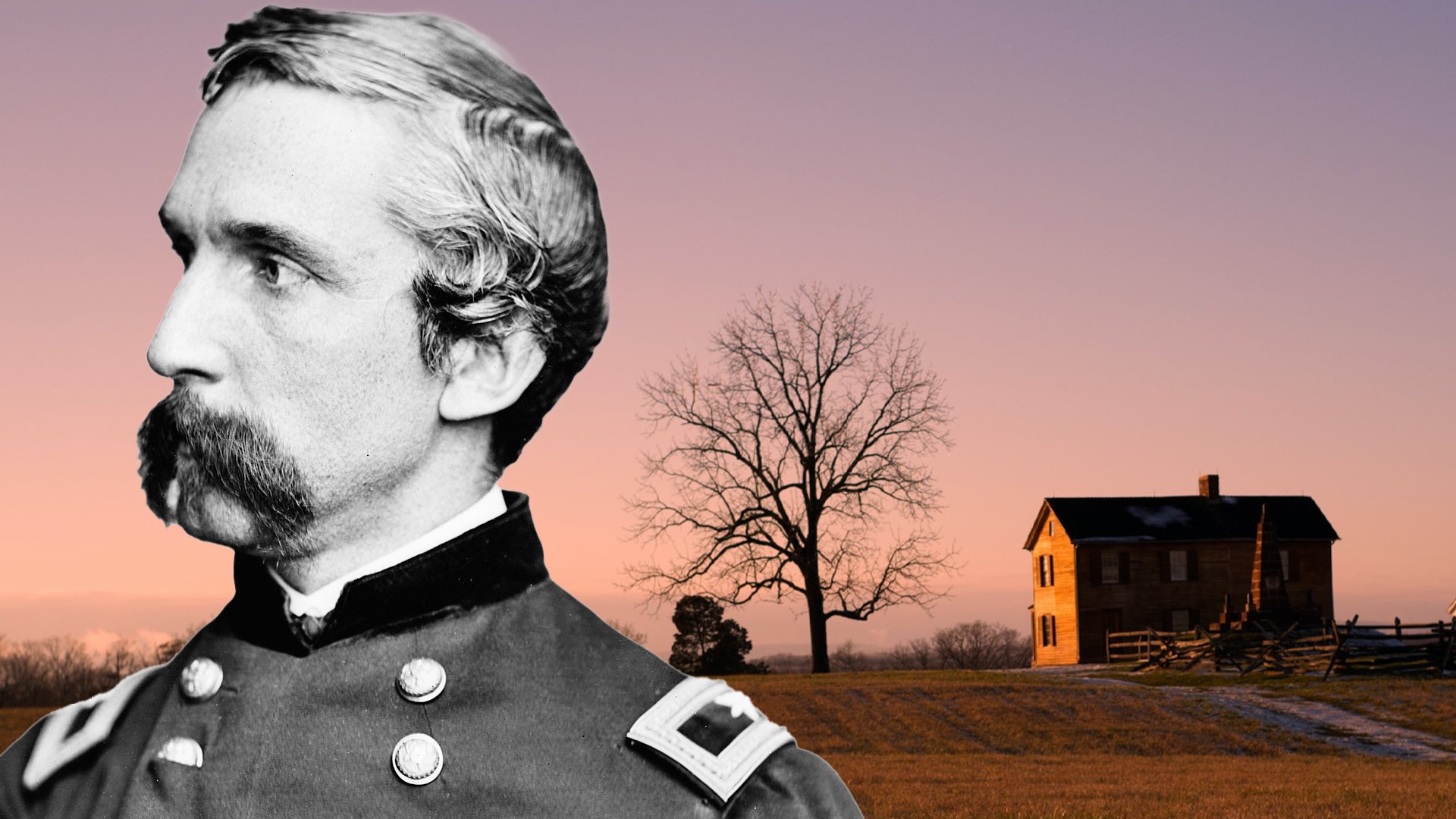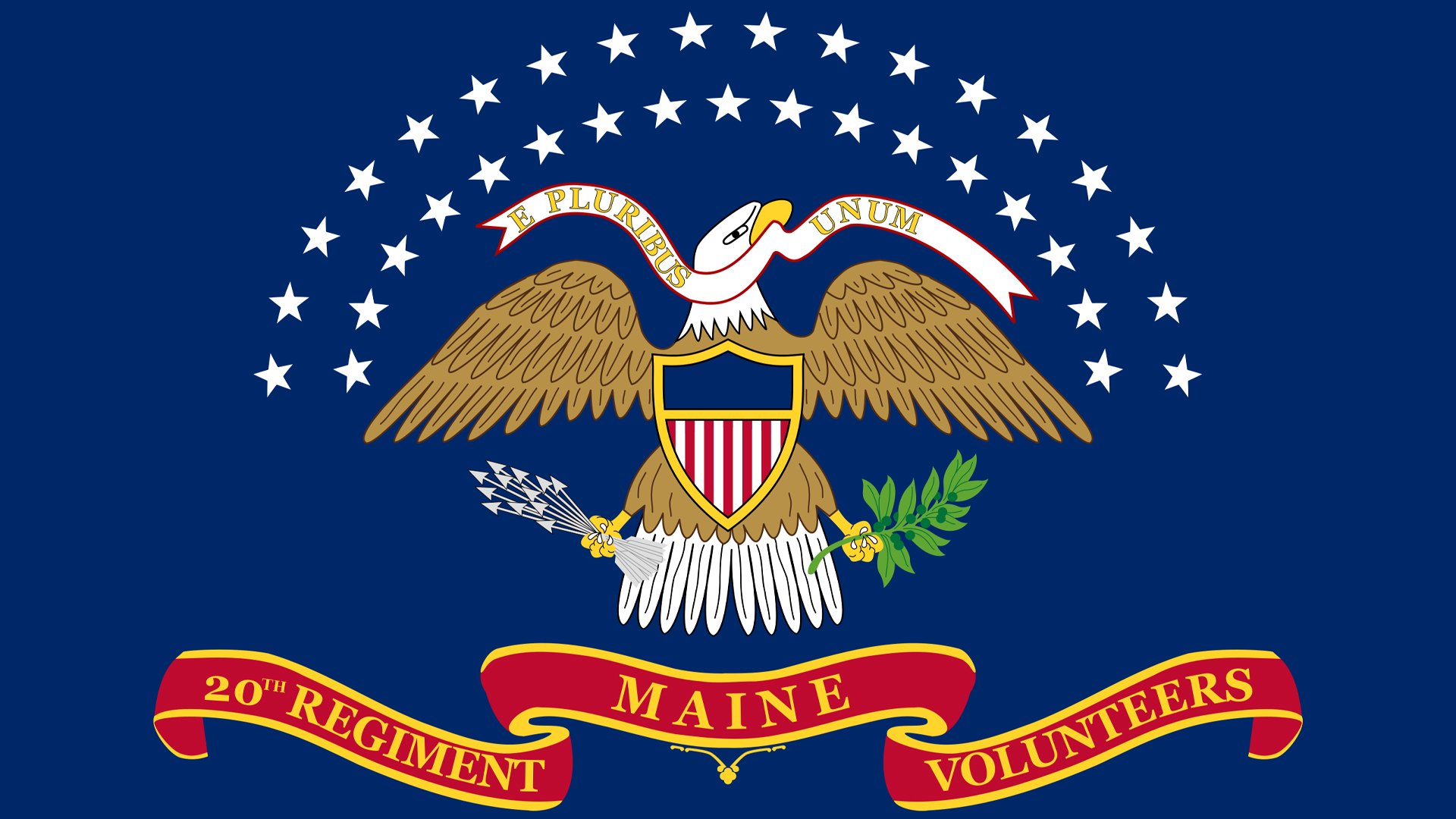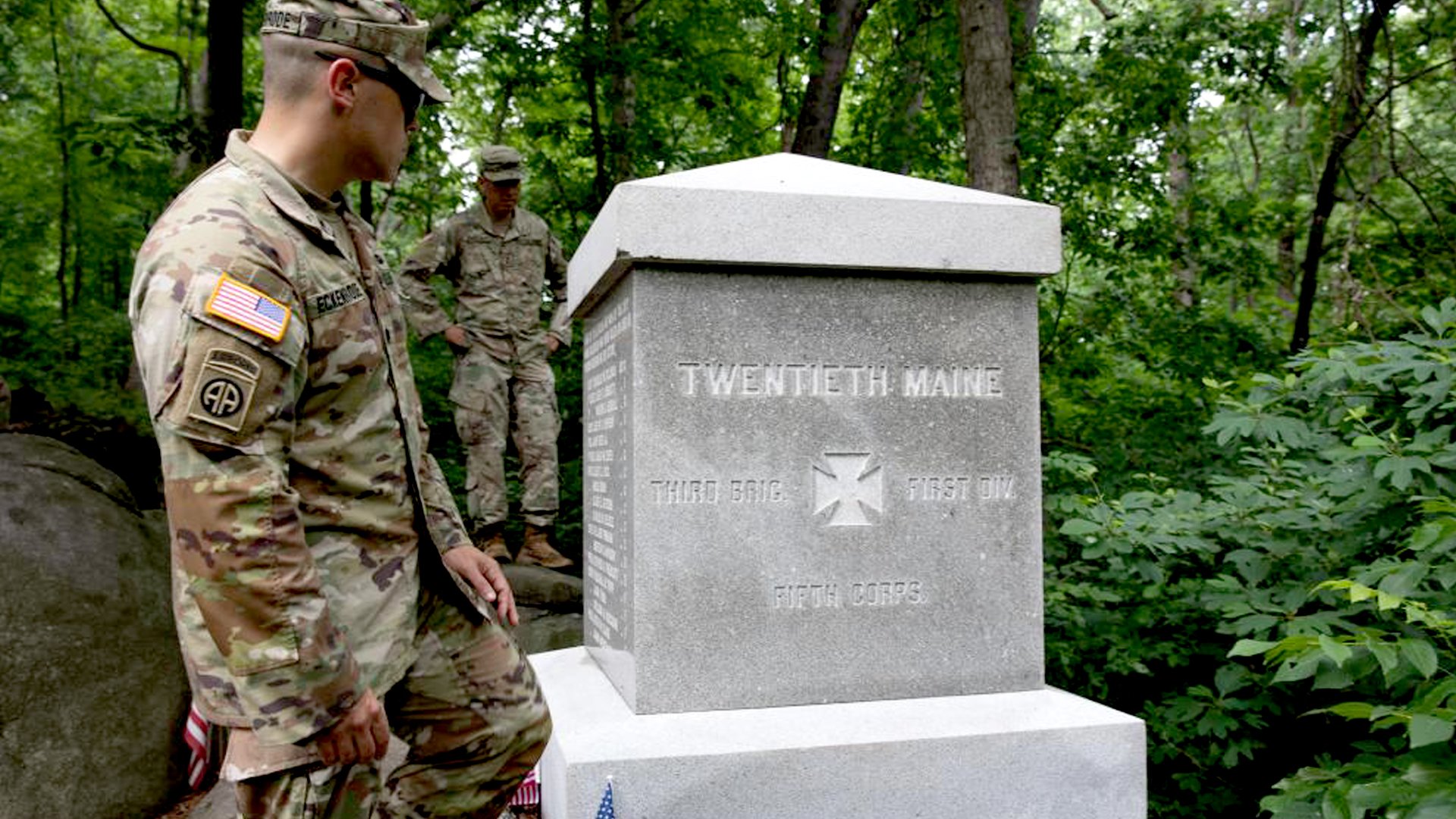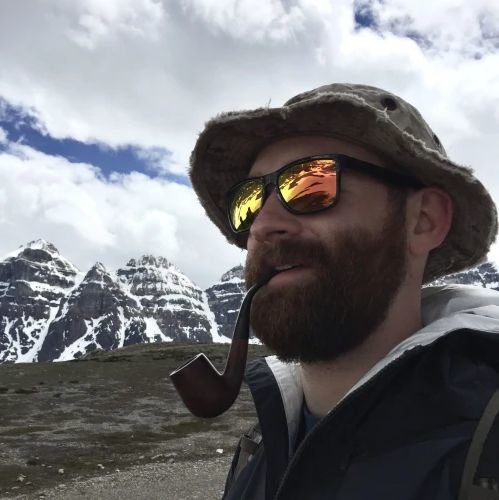
Some of the most interesting aspects of the fight for Little Round Top have been largely forgotten. Composite by Coffee or Die Magazine.
Col. Joshua Lawrence Chamberlain saw enemy troops moving between the trees downslope from his position. Confederate forces were preparing for a third assault up Little Round Top. Forming the extreme left flank of the entire Union force at Gettysburg, Chamberlain’s 20th Maine Volunteer Infantry Regiment could not afford to retreat. Nearly out of ammunition, they were also short on options.
Without enough bullets to repel the rebels a third time, Chamberlain yelled his infamous one-word command: “Bayonet!” At his order, the men of the 20th Maine affixed their bayonets to their Springfield muskets and prepared to attack.
Rushing down the western slope of Little Round Top, Chamberlain led his remaining men in the suicidal charge. Those who managed to reach the Confederate line engaged the enemy in hand-to-hand combat. But it didn’t come to that for most. Seeing a wall of blue-clad soldiers with 21-inch bayonets leveled at their chests, most of the Confederates turned and fled.

Flag used by the 20th Maine Regiment in the American Civil War. Photo courtesy of Wikimedia Commons.
The Union Army’s defense of Little Round Top is one of the most famous bayonet charges in history. Historians credit Chamberlain and his men with preventing a Union defeat at Gettysburg — the most decisive battle of the American Civil War.
And yet, despite being one of the best-known episodes of the entire conflict, the full story of Little Round Top has largely been forgotten. Here are three things you might not know about the events that transpired that day and the brave men who risked everything to preserve the Union.
Related: Civil War Roots of the US Military’s Tattoo Culture
A Squad of Elite Sharpshooters Played a Crucial Role in the Hill’s Defense
While four Union regiments from Michigan, New York, Pennsylvania, and Maine occupied Little Round Top on July 2, 1865, the 20th Maine typically gets the lion’s share of credit for the hill’s defense. After all, with nowhere to fall back, they alone formed the vulnerable flank of the Union line. But there were also 14 elite sharpshooters on the hill, and their actions that day were just as critical in thwarting the Confederate attacks.
Before Union infantry regiments were able to occupy Little Round Top, a squad from the 2nd US Sharpshooters slowed the Confederate advance by targeting enemy leaders. When the rebels turned to flee from the 20th Maine’s bayonets, the concealed sharpshooters unleashed a volley of deadly rifle fire, inflicting numerous casualties and causing more panic.
The specially trained and equipped riflemen of the 2nd US Sharpshooters hailed from all over the country. They were recruited into the elite unit because of their exceptional marksmanship skills. They carried .52-caliber breech-loading rifles, capable of higher rates of fire and faster reloading than standard infantry muskets.

Reenactors depicting members of the 1st US Sharpshooters. Note the unique green uniforms and boot gaiters. January 7, 2015. Photo courtesy of Wikimedia Commons.
The sharpshooters also wore green uniforms to blend in with vegetation, instead of the standard blue attire of the Army of the Potomac. Their camouflage uniforms were unique in that they also featured nonreflective buttons, rather than ones made of shiny brass.
Years after the war, William Oates — the Confederate commander who ultimately retreated from Little Round Top — acknowledged the sharpshooters’ impact on the outcome. In a letter to the commander of the 2nd US Sharpshooters, Oates claimed that had it not been for the elite marksmen he would have taken Little Round Top and dealt a deathblow to the Union at Gettysburg. He went on to say they deserved the “tallest monument on the field.”
Related: The Confederacy vs. Harriet Tubman: Women Spies of the Civil War
The 'Lion of Little Round Top' Was the Last Civil War Veteran To Die From His Wounds
Following Gettysburg, Chamberlain went on to fight in four more major Civil War battles. During the Second Battle of Petersburg, he was shot through the hip and groin. After keeping himself upright for several minutes by leaning on his saber, he collapsed from blood loss.
The battalion surgeon assessed Chamberlain’s wound and determined that it was fatal. Chamberlain was left for dead until stretcher bearers eventually evacuated him. His death seemed so certain that several Maine newspapers even reported him as killed in action.
Yet, Chamberlain made a miraculous recovery. In fact, he was promoted to brigadier general just five months after being shot. Then, four months after his promotion, Chamberlain was wounded a second time. He was shot through the arm during the Battle of Lewis’s Farm. Despite his wound, Chamberlain managed to keep fighting and even captured several enemy soldiers.

U.S. Army National Guard Lt. Col. David Eckenrode, Commander, 3rd Battalion, 112th Field Artillery Regiment (FAR), 44th Infantry Brigade Combat Team (IBCT), New Jersey Army National Guard (NJARNG), looks at the 20th Maine Civil War Monument at Little Round Top, June 12, 2022. US Army National Guard Photo by Sgt. 1st Class Devlin Drew.
Chamberlain recovered again and continued to serve throughout the remainder of the war. During four years of service in the Army, Chamberlain was wounded six times, had six horses shot from under him, and fought in 20 separate engagements. But his most famous achievement would always be the bayonet charge he led on July 2, 1863. He would forever be remembered as the “Lion of Little Round Top.”
After the war, Chamberlain’s groin wound continued to plague him. He suffered from infections, sexual impotence, and chronic pain for the rest of his life. He died from infection 50 years after being shot at Petersburg, making him the last Civil War veteran to die of wounds from the war.
Read Next: Virtual Reality YouTube Series Puts Viewers in Civil War Trenches, Front Lines
Historians Still Debate the Significance of Little Round Top
The Union victory on Little Round Top has long been regarded as a decisive moment in the war. It’s generally accepted that if Confederate forces had taken the hill, they could have placed artillery there and raked the entire Union force along Cemetery Ridge with enfilade fire. If that happened, the Battle of Gettysburg would likely have ended in a Confederate victory and the Army of Northern Virginia could have marched unopposed to Washington, DC.
Popular depictions of the battle, like the 1993 movie Gettysburg and Michael Shaara’s novel The Killer Angels, have fueled the belief that the final outcome of the war was decided at Little Round Top. But some historians dismiss the theory as a dramatic simplification.

View looking east toward Little Round Top, Gettysburg battlefield, Pennsylvania. April 20, 2019. Photo courtesy of Wikimedia Commons.
In his book, The Myth of Little Round Top, historian Gary Adelman argues that the stakes of the engagement have been greatly exaggerated. According to Adelman, taking the hill wouldn’t have given Confederates a significant tactical advantage, because its narrow rocky summit did not provide enough flat ground for cannons of the time. He notes that when Confederate artillery pieces were fired, the recoil caused them to jump backward up to a dozen feet — more space than what was available on Little Round Top.
Other historians point out that even if the Confederates had seized Little Round Top, they did not have enough men to hold it from the numerically superior Union forces nearby.
Read Next: 4 Unusual Weapons From the Civil War

Mac Caltrider is a senior staff writer for Coffee or Die Magazine. He served in the US Marine Corps and is a former police officer. Caltrider earned his bachelor’s degree in history and now reads anything he can get his hands on. He is also the creator of Pipes & Pages, a site intended to increase readership among enlisted troops. Caltrider spends most of his time reading, writing, and waging a one-man war against premature hair loss.
BRCC and Bad Moon Print Press team up for an exclusive, limited-edition T-shirt design!
BRCC partners with Team Room Design for an exclusive T-shirt release!
Thirty Seconds Out has partnered with BRCC for an exclusive shirt design invoking the God of Winter.
Lucas O'Hara of Grizzly Forge has teamed up with BRCC for a badass, exclusive Shirt Club T-shirt design featuring his most popular knife and tiomahawk.
Coffee or Die sits down with one of the graphic designers behind Black Rifle Coffee's signature look and vibe.
Biden will award the Medal of Honor to a Vietnam War Army helicopter pilot who risked his life to save a reconnaissance team from almost certain death.
Ever wonder how much Jack Mandaville would f*ck sh*t up if he went back in time? The American Revolution didn't even see him coming.
A nearly 200-year-old West Point time capsule that at first appeared to yield little more than dust contains hidden treasure, the US Military Academy said.












